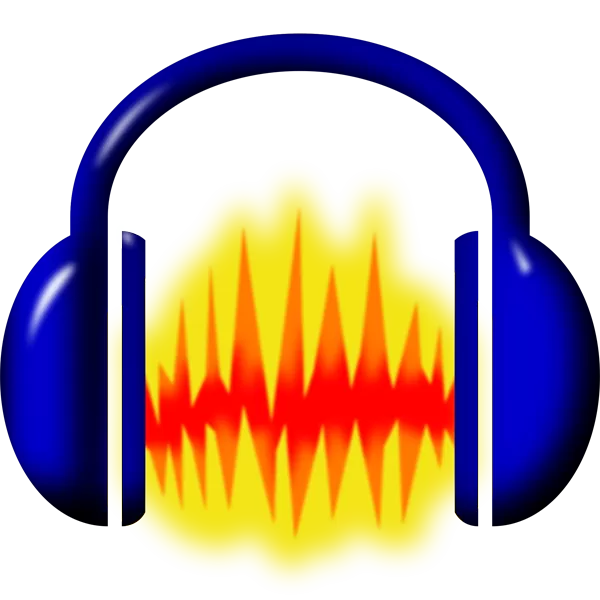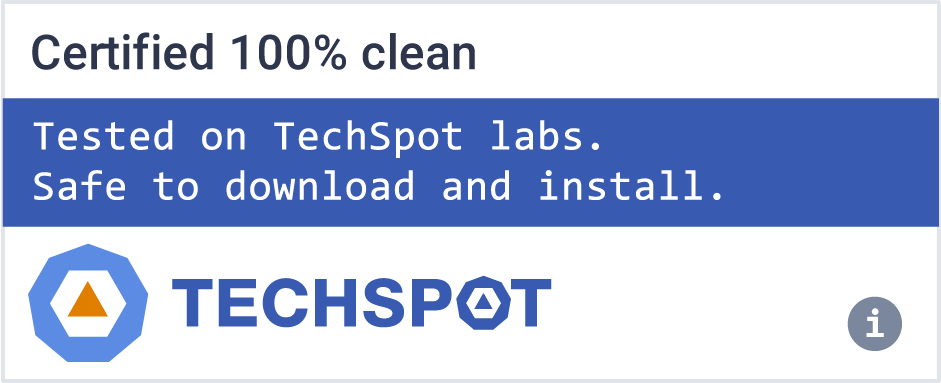Audacity is a free and open source audio software for multi-track recording and editing. It can record live audio through a microphone, mixer, or digitize recordings from other media. With some sound cards, and on any recent version of Windows, Audacity can also capture streaming audio.
Import sound files, edit them, and combine them with other files or new recordings. Export your recordings in several common file formats.
Is Audacity suitable for recording a podcast?
Yes, Audacity features a large number of effects and preset EQ curves with real time preview. It also lets you import and export WAV, AIFF, AU, FLAC, and MP3 natively. In addition, an auto-duck feature lets you mix different audio tracks or voiceovers for recording a proper podcast.
Is Audacity safe to use?
Audacity is free and open-source software that's been around for many years, so yes, it's safe to use. There was some controversy in 2021 after the company was acquired by Muse Group and changes were made to the program's privacy policy, but thankfully the community's protests got Audacity back on track.
Does Audacity work on Android or iOS?
No, Audacity is not available for Android or iOS, but WavePad offers similar functionality and is available on mobile for free.
What are the best Audacity features?
Audacity packs several features for recording and editing different type of audio files such as:
- 100+ sound effects.
- Support for 16-bit, 24-bit and 32-bit audio files
- Simple audio compressor
- A built-in mixer
- Plot Spectrum window for detailed frequency analysis
- Batch processes for tuning up several audio files at once
What are the best Audacity alternatives?
WavePad and ocenaudio are well known alternatives for recording and editing audio files.
Is Audacity free?
Yes, Audacity is free and open-source. You can use this software for any personal or commercial purpose.
Features
Recording
- Audacity can record live audio through a microphone or mixer, or digitize recordings from other media.
Export / Import
- Import, edit, and combine sound files. Export your recordings in many different file formats, including multiple files at once.
Sound Quality
- Supports 16-bit, 24-bit and 32-bit. Sample rates and formats are converted using high-quality resampling and dithering.
Plug-ins
- Support for LADSPA, LV2, Nyquist, VST and Audio Unit effect plug-ins. Effects can be easily modified in a text editor - or you can even write your own plug-in.
Editing
- Easy editing with Cut, Copy, Paste and Delete. Also unlimited sequential Undo (and Redo) in the session to go back any number of steps.
Effects
- Real-time preview of LADSPA, LV2, VST and Audio Unit (macOS) effects. Plug-in Manager handles plug-in installation and addition/removal of effects and generators from the menus.
Accessibility
- Tracks and selections can be fully manipulated using the keyboard. Large range of keyboard shortcuts.
Analysis
- Spectrogram view mode for visualizing and selecting frequencies. Plot Spectrum window for detailed frequency analysis. Support for Vamp analysis plug-ins.
What's New
Cloud project saving
We've introduced a new cloud-saving feature that allows you to save your Audacity projects to audio.com. This allows you to work from any device, share & collaborate with others and restore previous versions if something went wrong.
Automatic tempo detection
Audacity can now automatically detect the tempo of imported loops, and adjust them to be in tempo.
Tempo detection is done via both audio analysis and metadata checking. If you want to prepare your loop for automatic tempo detection without relying on audio analysis, both acidizer tempo tags or simply writing "123 bpm" anywhere into the filename work.
Automatic tempo detection can be turned off via Preferences -> Import/Export.
Pitch shifting
You now can non-destructively change the pitch of a clip by holding Alt and pressing the Up and Down arrow keys. Alternatively, you can click on the overflow menu (...) and select "Pitch and speed...". When changing the pitch this way, an arrow in the UI indicates how much you've shifted it.
Change Pitch indicator on a clip (alongside a speed indicator, and the 3-dot overflow menu)
Additionally, the Pitch and speed dialog also features an option to optimize for voice which preserves formants.
Other changes
Additions
- Added an option to skip plugin scanning to Preferences -> Effects.
- Added an overflow menu, as well as speed and pitch indicators to clips.
- Added subtitle formats for labels. Export to WebVTT and SubRip and import of SubRip files is now supported. (Thanks, Pokechu22 and Larry Bordowitz!)
Changes
- Reworked the plugin manager. It's now simplified and filterable, and also has a search box.
- Improved accessibility. (Thanks, David Bailes!)
- When zooming in vertically (Ctrl+scroll on the vertical scale), the zeroline now remains centered. Moving the vertical zoom off-center still is possible via Shift+scroll on the vertical scale.
- Changed the look of the selection adjust cursors (previously pointing fingers on Windows and macOS, now look like >| everywhere).
- Changed the timeline options button from a green triangle to a settings gear. From it, you can switch between Beats & Measures or hh:mm:ss timeline rulers, set various preferences regarding to looping, as well as playhead behaviors: "Scroll view to playhead" (previously: "Update display while playing") and "Continuous scrolling" (previously: Pinned Play Head).
- Improved BSD support. (Thanks, Brad Smith!)
- Changed the Audacity.app icon on macOS to fit new design guidelines. (Thanks, Filip Krawczyk!)
- Reordered some menus.
- Moved the OK/Cancel buttons of effects to the bottom.
Introducing OpenVINO AI effects for Audacity
Intel has built a suite of AI tools for Audacity, useful for spoken word audio and music alike. These AI features run 100% locally on your PC.
- AI tools for podcasts
- For spoken word content, the OpenVINO effects contain a noise supression and a transcription plugin.
- The Noise Suppression does what it says on the tin - it suppresses noise. As such it behaves similar to Audacity's built-in Noise Removal effect.
- The Transcription powered by Whisper.cpp can both transcribe and translate words and outputs to a label track. If you want to export these transcriptions, you can do so via File → Export Other → Export Labels.
- AI tools for music
- For music, both generation and separation plugins are part of the OpenVINO effects.
- Music Generation and Music Style Remix use Stable Diffusion (and Riffusion in particular) to generate new music from a prompt, or based on pre-existing music, respectively.
- Music Separation can split a song into either it's vocal and instrumental parts, or into vocals, drums, bass and a combined "anything else" part. This is ideal for creating covers and playalongs.
- Download and installation
- The OpenVINO plugins are currently available for download here.
- Currently, only a Windows version is available for download. The project may be compiled on Linux and macOS, though no instructions are available for the latter yet.
Bugfixes
- #5467 Fix 24-bit recording.
- #5488 Fix a crash with .aup importing.
- #5471 #5483 Fix crossfading of clips and tracks.
- #5473 Exporting multiple files honors sample rate settings again.
- #5480 #5417 Fix crashes related to external program exports.
- #5479 #5476 Fix BSD and ARM builds.
- #5498 Ctrl+J is now a standard shortcut for joining clips.
- #5389 Stereo tracks no longer randomly split into mono.
- #5007 When exporting a file, the file extension is now always added (except for custom FFmpeg and external program exports).
- #5516 Fix a crash when exporting Opus with older CPUs that don't support AVX.
Changes
- Some of the built-in effects are now realtime capable (Bass & Treble, Distortion, Phaser, Reverb and Wahwah).
- #4352 Added a new effect: Shelf Filter.
- Added an initial (beta) version of Beats and Bars.
- #4414 Reworked the bottom toolbar dock:
- Project Sample Rate is now found in Audio Setup -> Audio Settings (formerly known as Project Rate).
- The Snapping Toolbar (formerly known as Snap-To) is now independent of the Selection Toolbar.
- Added a new Time Signature Toolbar (beta). It is hidden by default.
- #4212 Improved Zooming behavior slightly (more to come in the future).
- #4393 Added a new ruler, Linear (dB). This ruler goes from 0 dBFS to -∞ dBFS and better reflects the volume as shown in the recording/playback meters.
- #3820 When copying clips between projects, you now can choose between whether to copy smart clips or just the visible portion.
- #4133 Added a delete button to the Cut/Copy/Paste toolbar.
Previous Release Notes:
Bug fixes
- #1584 Audacity no longer dithers tracks unnecessarily.
- #2427 Linux playback now handles output latency better (less stutters).
- #3796 The EQ effect no longer resets clip names.
- #3801 Audacity no longer crashes when trying to load projects with plugins that since have been deleted.
- #4417 Resampling a track no longer trims it.
Libraries
- FFmpeg 6 (avformat 60) is now supported.
- Moved from Breakpad to Crashpad.
- Extracted various libraries from within Audacity.


